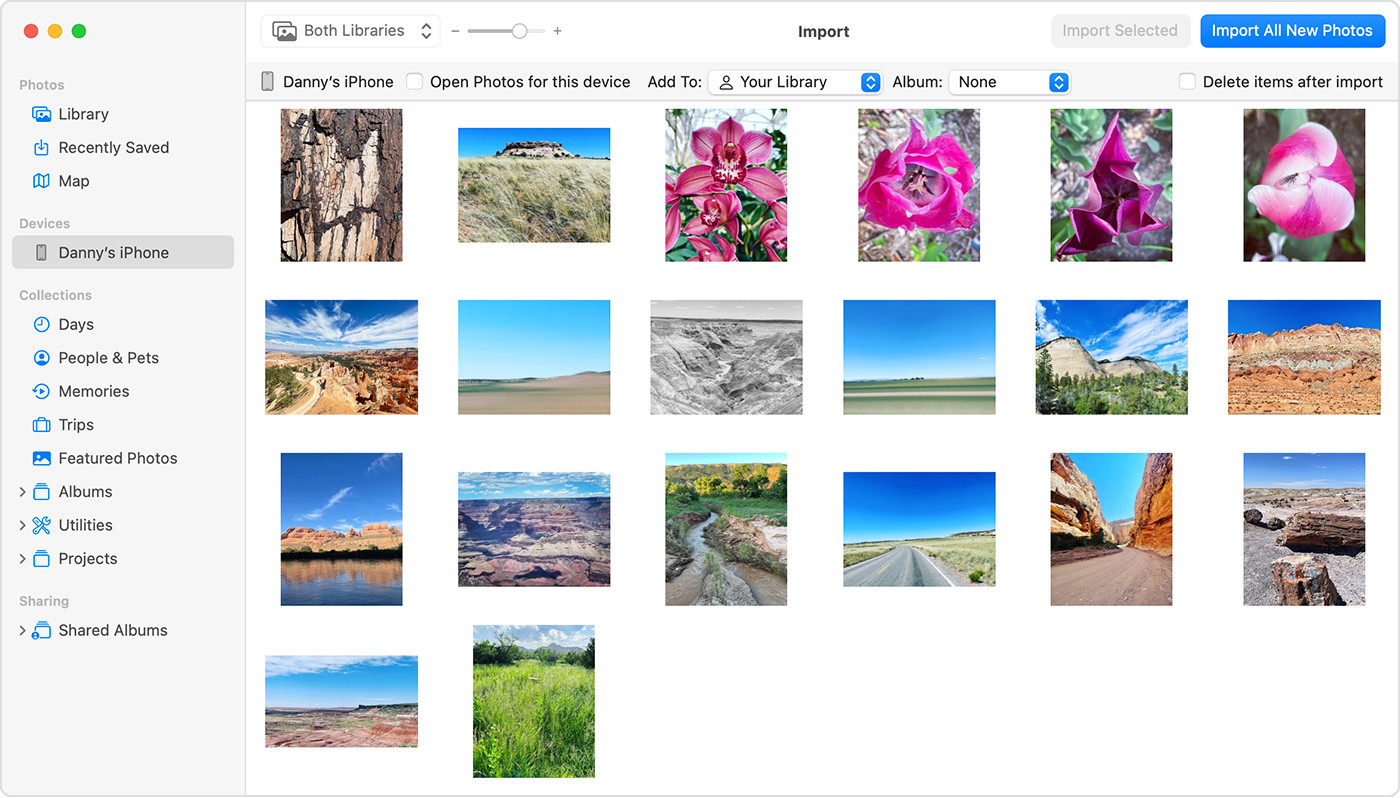Transferring your precious photos and videos from your iPhone to your PC is a common task, whether it’s for backing them up, freeing up phone storage, or editing them on a larger screen. Fortunately, there are several straightforward methods to achieve this, catering to different needs and preferences. This guide will walk you through the most effective ways to copy photos from your iPhone to your Windows PC, ensuring your memories are safely transferred and readily accessible.
Method 1: Utilizing the Apple Devices App for Windows
The most direct and recommended method for Windows users involves using the Apple Devices app. This application streamlines the connection between your iPhone and PC, making photo transfer seamless.
-
Install the Apple Devices App: If you haven’t already, download and install the “Apple Devices” app from the Microsoft Store on your Windows PC. This is a crucial step for enabling proper communication between your devices.
-
Connect Your iPhone to your PC: Use a USB cable to connect your iPhone to your computer. Ensure both devices are powered on.
-
Unlock Your iPhone and Trust the Computer: You may be prompted to unlock your iPhone using your passcode. Additionally, a “Trust This Computer” alert might appear on your iPhone screen. Tap “Trust” or “Allow” to grant your PC access to your device’s data.
Once these steps are completed, your iPhone should be recognized by your PC, and you can proceed with importing your photos using the Microsoft Photos app, as detailed on Microsoft’s support website. This method is reliable and efficient for transferring photos directly from your iPhone to your PC.
 Accessory prompt to allow or don’t allow accessory to connect.
Accessory prompt to allow or don’t allow accessory to connect.
Method 2: Importing Photos via iCloud Photos for Windows
If you are already using iCloud Photos to store and sync your photos across your Apple devices, you can leverage iCloud for Windows to access your photo library on your PC. This method is particularly convenient if you prefer wireless syncing and access to your photos on both your iPhone and PC.
-
Enable iCloud Photos: On your iPhone, navigate to Settings > [Your Name] > iCloud > Photos and ensure “iCloud Photos” is turned on.
-
Install iCloud for Windows: Download and install iCloud for Windows from Apple’s website.
-
Sign in to iCloud for Windows: Open iCloud for Windows on your PC and sign in using your Apple ID and password.
-
Select Photos: In the iCloud for Windows interface, make sure “Photos” is selected. You can adjust the options to download new photos and videos to your PC.
With iCloud for Windows set up, your photos and videos from iCloud Photos will automatically download to your PC, allowing you to access them directly from your Windows file explorer. Keep in mind that this method relies on your iCloud storage and internet connection. Also, if you want to import to your PC, ensure the original, full-resolution versions of your photos are downloaded to your iPhone first if you have optimized storage enabled in iCloud Photos settings on your iPhone.
Method 3: Direct USB Transfer without Apps (Less Recommended)
While less streamlined than using the Apple Devices app, you can still directly access your iPhone’s photos as a portable device in Windows File Explorer.
-
Connect iPhone via USB: Connect your iPhone to your PC using a USB cable and unlock your device.
-
Trust Computer (If Prompted): Tap “Trust” on your iPhone if you see the “Trust This Computer” prompt.
-
Access iPhone in File Explorer: Open File Explorer on your PC. Your iPhone should appear under “This PC” as an Apple iPhone or similar device name.
-
Navigate to DCIM Folder: Double-click on your iPhone’s device name, and you should see an internal storage folder, typically named “Internal Storage”. Open this folder, and then navigate to the “DCIM” folder (Digital Camera Images). This folder contains subfolders with your photos and videos.
-
Copy Photos: You can now manually copy photos and videos from the DCIM folders to a folder on your PC.
However, this method might be less user-friendly for large transfers and may not always work reliably for all users or iPhone models compared to using the dedicated Apple Devices app.
 Mac screen showing the photos available for import
Mac screen showing the photos available for import
Troubleshooting and Considerations
- Incorrect Video Rotation: When transferring videos to a PC, some videos might appear rotated incorrectly in the Microsoft Photos app. A potential workaround is to add these videos to iTunes to play them in the correct orientation.
- Photo Compatibility: For optimal compatibility with Windows, you can adjust your iPhone camera settings. Go to Settings > Camera > Formats and select “Most Compatible”. This will ensure your iPhone captures photos and videos in JPEG and H.264 formats, which are widely supported.
- iCloud Storage: Using iCloud Photos relies on your iCloud storage capacity. Ensure you have sufficient storage to accommodate your photo library, or consider upgrading your iCloud storage plan if needed.
Conclusion
Copying photos from your iPhone to your PC is a straightforward process with multiple options available. For most users, utilizing the Apple Devices app in conjunction with the Microsoft Photos app offers the most user-friendly and reliable experience. iCloud Photos provides seamless wireless syncing for those invested in the Apple ecosystem, while direct USB access offers a basic alternative. Choose the method that best suits your needs and enjoy your photos on your PC!
